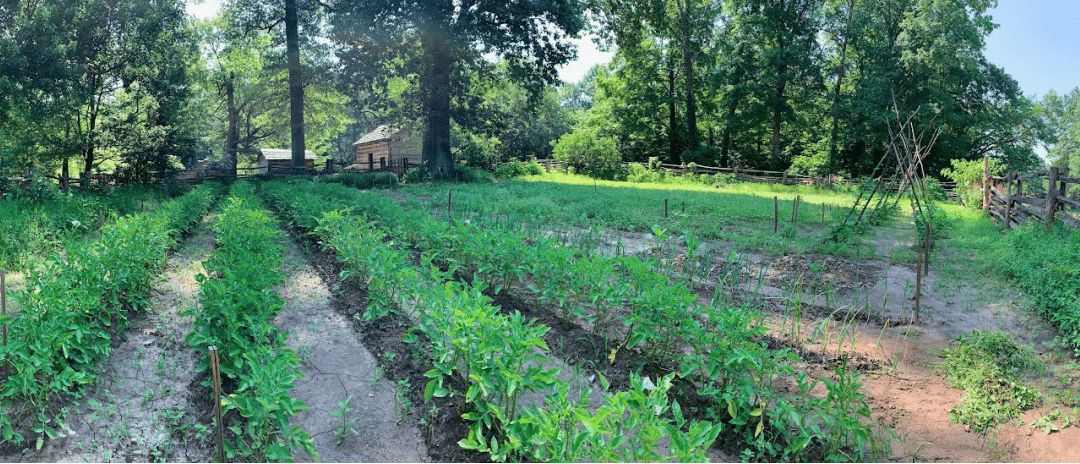By Sabrina Gonzalez
Playing Dress-Up
This week was quite exciting. Finally, after waiting for weeks and weeks I dressed up as a pioneer women and, possibly even, a future Halloween costume. This was all for the living historical farm at the park to provide visitors with a visual representation of what life would have been like during the early nineteenth century when Abraham Lincoln lived in Southern Indiana.
This entire outfit consists of a chemise, dress, pocket, skirt, apron, mop-cap, tall socks and leather boots. The chemise is a white gown that hangs just above my ankles and was worn throughout the entire day. Pioneer men and women would work and slept in these gowns. The proper way to assemble the outfit was to place the dress over the chemise then tie the pocket on the hip followed by the skirt and apron. Lastly, putting on the mop-cap, socks and shoes.
Unfortunately, in both photos I am not historically accurate. My hair is down which beats the purpose of the mop-cap. It is designed to make sure my hair stays as clean as possible while I am completing my womanly duties on the farm and in the cabin. During this time, in the early nineteenth century, I would not have bathe often so finding ways to keep clean was important. My glasses and my clean teeth are also not historically accurate but for my safety and hygiene I will just have to inform visitors of what a proper pioneer women would have looked like.
Life on the Farm
Aside from wearing a three layered outfit in the Indiana heat, I also have to complete a few farm duties. This starts with feeding the chickens in the morning, unlocking the cabin to the public, and helping with herding the sheep to an enclosed field for the day. Once this is done we welcome the public to the living historical farm and ask questions that they have. “Where did Arbarham Lincoln sleep?” “In the loft upstairs.” “Are there any original items here?” “Unfortunately, not in the cabin. We do have an original piece by Thomas Lincoln in the museum.” Questions like this are asked all day. The other interpreters and I try to answer them to the best of our knowledge. This is a highlight of my day because it drives me to research more about Lincoln’s young so I can answer the puzzling questions the visitors may have.
Throughout the day we also try to maintain the garden. The tomatoes and onions should bloom in a few weeks. I am looking forward to using them in my meals because this farm is completely organic and everything is done by hand. We do this because we try to create an exact replica of what the Lincolns farm would have looked like and would have done for a good harvest. The garden picture in this log post was taken after I pulled weeds in the tomato and onion patches.
Being a Museum Technician
For the summer Mike Capps, Chief of Interpretation, is having me complete the museum collections catalog. What this means is that I have to classify, describe, measure, and research each item that has not been cataloged yet so that it can be filed into the park’s museum collections. The hard part about this job is when Mike and I do not know what an artifact is. This is where the research comes in. The park has a small library that has a majority of books about Lincoln’s young and woodworking equipment. Most of the artifacts that we are unable to identify are some sort of woodworking tool so the research runs smoothly.
For artifacts that we do know, such as this tombstone from the Pioneer Cemetery, the filing is pretty much just filling in a museum catalog record sheet. This tombstone is significant and in the museum collections because the infant was part of the Gentry Family. When the Lincoln left Indiana to move to Illinois in 1830 they sold their farm to the Gentry family.
Free Time Activities
When I am not working I try my best to explore the perks of living in Southern Indiana. I am fortunate enough to live next to the Lincoln State Park and Hoosier National Forest. I often go on hikes in both locations and enjoy the scenery. This week I decided to take it up a notch by repelling with a few of my work colleagues at Hoosier National Forest. That was an experience that I believe everyone should try at least once in their life. It is truly thrilling.
What I Have Learned So Far
The National Park Service is a place where I want to continue to learn and grow.







